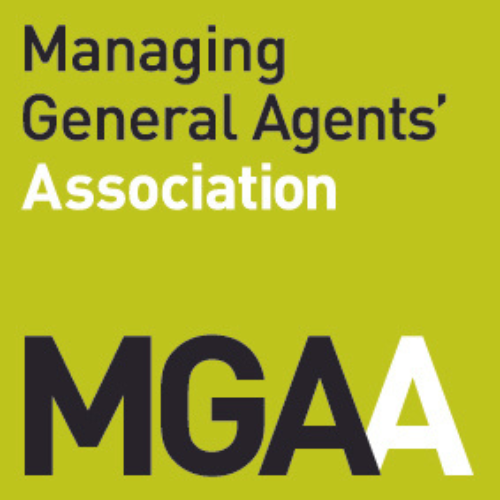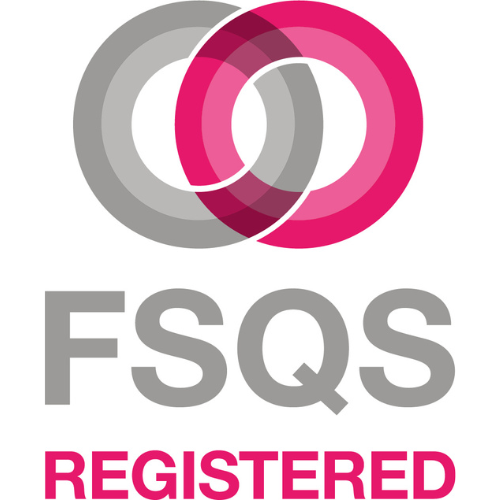Baseball may not be a major sport on this side of the Atlantic, but most people will be familiar with the “three strikes and you’re out” concept. If the multi-firm review and findings from the FCA back in September 2022 were considered ‘Strike One’ for insurance firms, then the FCA’s “Dear CEO” letter of 23rd February titled ‘Re: Product Governance Thematic Review – General Insurance and Pure Protection’ can certainly be considered ‘Strike Two’. It is a damning assessment from the FCA of what it clearly sees as market-wide failings on the central theme of its strategy to deliver its core objective of protecting consumers from harm.
“In our review, we saw shortcomings relating to key areas such as product governance arrangements, fair value assessments and management information. These shortcomings are disappointing given the focus and emphasis we have placed on the Consumer Duty and firms’ obligations to ensure their products deliver fair value to customers.”
Given the evidence subsequently presented by the FCA as an interim update on its findings from its Thematic Review on Product Governance, it is difficult to find any basis upon which to disagree with that statement. There are of course some examples of good practice shared by the FCA as it continues its approach of concurrently encouraging and supporting those who demonstrate a real willingness and commitment to comply, whilst taking decisive action against those who don’t. We’ve seen recent evidence of the latter with the action very publicly announced against the GAP insurance market just a few weeks ago. Insurers, MGAs and Brokers in the GAP market suddenly found their business plans turned upside down and in effect suspended. And if anyone thinks the FCA has its hands full there right now, pay heed to this comment from Matt Brewis in the letter:
“We recently intervened to address such value issues we identified in the Guaranteed Asset Protection (GAP) market and this is not the only product where we have these concerns.”
We know that the sample looked at by the FCA at this stage of their Thematic Review covered a range of personal and SME commercial lines products, but precisely where those ‘concerns’ lie is a matter of educated guesswork which we will not speculate upon in this article. However, we have given hints in previous markets briefings, the recordings of which can be found on our website and YouTube Channel.
Key Observations From The FCA
Continuing the theme of offering plenty of examples of good practice is a welcome one. This is an area where firms are being encouraged to learn from the actions taken by others to enhance consumer protections. But the general tone is one of concern, with references to many of the previous actions and interventions on Fair Value and Product Governance included. Coming back to our baseball analogy, some might argue the market has already had ‘Strike Two’, but the tone of the message is perhaps more ‘last chance saloon’, with Brewis saying:
“We are providing this update so that all manufacturers can identify and address where these issues may be applicable to them and their products. Please consider these observations and whether they apply to your product oversight and governance arrangements, to help you to identify where you may not be meeting your regulatory obligations and any risks of consumer harm arising from the shortcomings in your current approach.
We expect all manufacturers to assess and evidence the value their products provide, in a way which brings real scrutiny, and can identify products not delivering fair value. Where such issues are identified, firms need to take appropriate action to address any harm arising, including withdrawing products from sale where necessary, whilst value issues are addressed.
“We expect your firm and its senior managers to carefully consider the contents of this letter in the context of the products you manufacture or co-manufacture and your specific activities and responsibilities in relation to these products.”
The key observations shared by Matt Brewis from their work so far are:
- There remain shortcomings or inconsistencies in the application and evidencing of the product governance and value assessment framework. This includes issues with product oversight and governance arrangements and the appointment of an appropriate senior manager with responsibility for product governance.
- Target market statements are not meeting expectations, often being too high level and lacking in granularity for the product in question, or simply treated as a ‘tick box’ exercise with evidence suggesting products continue to be sold to customers outside the identified target market who are unlikely to receive fair value or achieve good outcomes from the product.
- A real concern about shortcomings in the quality of the fair value assessments undertaken by many firms. Indeed, where the FCA set out details of their concerns in the Annex to the letter, more ‘column inches’ are devoted to Fair Value than any of the other three.
- A failure of individual firms involved in the co-manufacture of products to be able to demonstrate how they had met all of the PROD 4.2 requirements. The letter as a whole should be a real wake-up call to Insurers, MGAs and Brokers operating schemes, with one particular concern being a lack of co-manufacturing agreements. The FCA noted that in many cases they were referred to a standard TOBA as the basis on which the parties were seeking to meet this obligation.
Actions For Firms
This communication from the FCA is all about ensuring action is taken, and quickly. The sense of urgency is clear from the fact the FCA has seemingly been unwilling to wait just a month or two until its full report is published – it is due in Q2 2024. That in itself is a pretty damning assessment of firm’s performance in general, with an interim statement such as this a very rare occurrence.
Product Governance and Oversight
The feedback here was mainly around the implementation of Frameworks, with issues around the process not being effectively embedded across business units and product reviews and fair value assessments not always aligned to the POG frameworks. We’ve often said that the regulator has moved away from its ‘box ticking’ approach, but it seems many of those regulated may yet have some catching up to do.
Our advice to firms is to focus on:
- Ensuring you have a centralised process for collating and assessing information on Fair Value.
- Ensuring the assessment of Fair Value is a continuous exercise with clear processes for understanding when a review may be required, triggered by events as much as time.
- Ensuring all discussions at your POG committees are rounded, include the opportunity for reasonable questioning or challenge and that comprehensive minutes of the discussions and actions are taken.
- The process of collation of the information and the documenting of the specific reasons that the product is providing fair value must be detailed. So a paper going to a POG which says “We have determined that the product provides fair value” without any explanation of the reasons or a note in the Minutes of the POG which does the same, again without evidence of discussion, challenge and understanding and identification of the reasons will not meet FCA expectations.
You may have an effective POG process, but a failure to document these and the deliberations that take place, with clear evidence of discussion and decision-making based on appropriate information, will mean that in the eyes of the FCA, it never happened.
The Target Market
Product development in any industry, whether selling services or physical products, is all about knowing your customer and designing products that are suitable for their specific needs or interests. Feedback from the FCA suggests the insurance industry has not done a great job on this front.
“We observed that very few products had a target market statement that met our expectations.”
That was the opening line in the section on target market statements. Not a great start and an area where there is clearly need for collective improvement. The key areas for improvement are:
- Make sure your target market statements are comprehensive and consider granular groups and sub-groups. More detail is required in general, not only covering those for whom the product would be considered suitable, but also identifying any groups of customers for whom a product might not provide the intended level of value, such as scenarios where a specific exclusion may affect a particular group of customers.
- Where there are multiple groups which may have different characteristics there should be identification of whether the product has different characteristics to meet these variations and if not why the product meets the needs of all groups.
- Ensure there is consistency between co-manufacturers. It is a single product – there should only be one target market. That was not always the case on the evidence seen by the FCA apparently.
- Ensure you align your target market statements with sales literature and the product is actually sold to the intended market. Not much information was provided on why the disconnect may have occurred, but the FCA found examples of sales teams targeting different audiences.
Product Approval Process Including Fair Value Assessments & Reviews
In by far the largest part of the Annex to Matt Brewis’ letter, the FCA raise a lot of concerns over the way these are managed. The issues seem to fall into two broad areas – a tick-box approach in the hope that it would be sufficient to meet expectations and a failure to act on identified or obvious issues. Specific issues firms need to focus on are:
- The total cost of a product to customers, not just the ‘underwriting’ cost. A particular concern raised by the FCA was the failure of firms to factor in the total remuneration paid to or earned by distributors as part of the Fair Value assessment. Manufacturers should be including this in their fair value assessments. Of course each distribution channel may have different charges, offer different levels of service and ultimately provide different levels of ‘value’. It can be a complex part of the overall Fair Value Assessment to manage and one area where technology can provide a real benefit.
- Make sure you have good Management Information – and use it. That includes the monitoring of distributor’s remuneration, which was a particular concern of the FCA..
- Ensure any tolerances or limits you set are designed to reflect what constitutes Fair Value to a customer. Historic norms do not mean value has been provided and of course situations change, hence the expectation of regular reviews. Fair Value is dynamic and economic, and market changes can influence whether the product is good or not; performing appropriately or not. When undertaking your regular reviews, make sure that involves the tolerances too.
- Consider the needs and value derived by any sub-groups or cohorts of customers. Not all customers are equal. A product may provide Fair Value for some customers, but not others. In which case, perhaps the target market statement needs more thought.
Most importantly, be prepared to act. If an issue is identified, be clear on what needs to be done and by when. Withdraw, suspend or adapt. That is the regulatory expectation and it was applied to the GAP market where the FCA have accepted that the product can provide fair value but market dynamics evidence that at the moment because of high second hand car prices and distribution costs, the product was not providing fair value. As Matt Brewis says:
“We saw shortcomings in the quality of the fair value assessments undertaken by many firms, with common issues including…failure to identify value issues even where these were apparent or to take appropriate actions to address these.”
It seems to us that the FCA have stopped just short of a more significant statement when they say “even where these were apparent”. That is inferring an issue of competence or conduct. Neither is good. A process that involves multiple lines of defence within the overall process removes the risk of such individual issues arising.
Co-Manufacturing
The concept of co-manufacturing is one that is now well understood. But in the minds of the FCA, there are weaknesses in the approach to Product Governance and Fair Value when it comes to these scenarios, with a number of specific issues being highlighted that have the potential to impact Insurers, MGAs and Brokers, particularly those that operated delegated authority style schemes where much of the ‘manufacturing’ and processing is done by them. If you are involved as a co-manufacturer of any products, you should:
- Make sure you have a co-manufacturing agreement in place. A traditional TOBA is very unlikely to cover the relevant issues.
- As an insurer, make sure you have a process for meeting your obligations under PROD 4.2 and for verifying what has been done by your co-manufacturing partners.
In many respects, co-manufacturing makes sense, but it is not possible to delegate accountability under PROD.
One interesting point of note – co-manufacturing was the only area of concern where the FCA did not publish any best practice examples. An oversight, or a consequence of there being none? We are not sure.
The VisRisk Solution
The FCA have placed significant expectations on firms to take action and doing so will require resource and time commitment. VisRisk is a powerful tool that can streamline and evidence your fair value compliance. It helps facilitate the distribution, gathering, assessment and reporting of the information required to deliver a key element of the FCA’s Consumer Duty Price and Value Outcome across large and complex distribution networks. Find out more about the VisRisk solution here.
Conclusion
Interim action such as this from the FCA is rare. The fact they have acted clearly tells us they feel the risk of harm to customers is significant and continuing and they feel the need to act more swiftly than the ordinary pace of a Thematic Review might dictate. When we remind ourselves that the timetable for this Review is for the final report, including the full findings, expectation, actions and next steps, to be published in Q2 2024 – potentially as close as a few weeks from now – it seems to us very clear that this is a major wake-up call for product manufacturers, including the co-manufacturing cohort of MGAs and intermediaries. Or in baseball terms, strike two.
If your responsibilities include being a nominated product governance lead, Consumer Duty champion or part of a Product Oversight and Governance (POG) Committee, you should ensure you have seen and digested the contents of this letter carefully and understand what is expected of you and your firm by the FCA. There is a window of opportunity to act before the final report is published and the FCA has made it clear it will not look kindly on those who have chosen not to avail themselves of that opportunity.
“Firms who fail to meet their obligations in this area fully, and who are unable to demonstrate that they are providing fair value to their customers, should expect us to intervene using the full range of our regulatory tools.” (Matt Brewis, 23rd February 2024.)
If you have any questions about the way your firm has approached the issues raised in this article, please speak with Kenneth Underhill, Claire King or your usual ICSR contact.

Kenneth Underhill
Director









